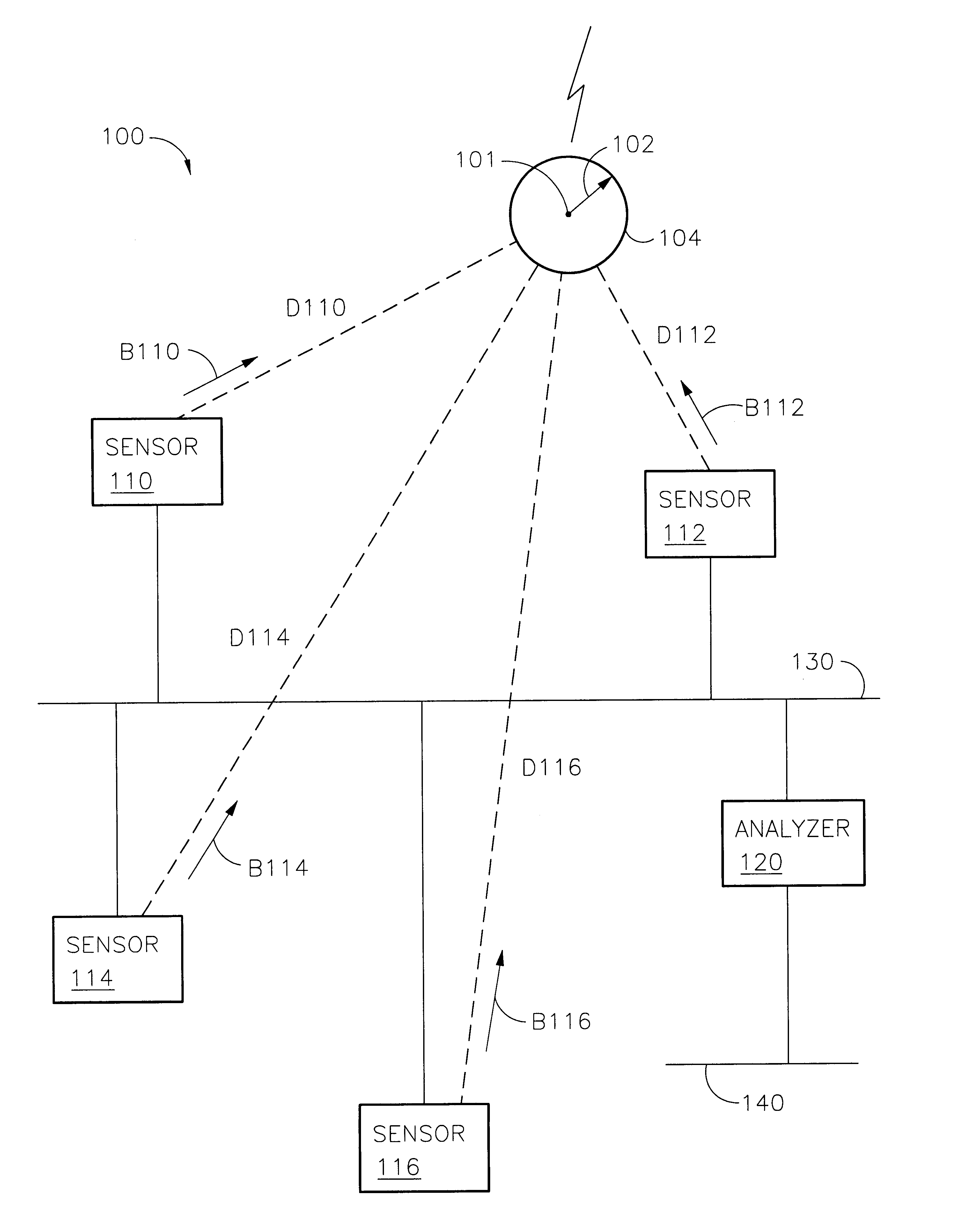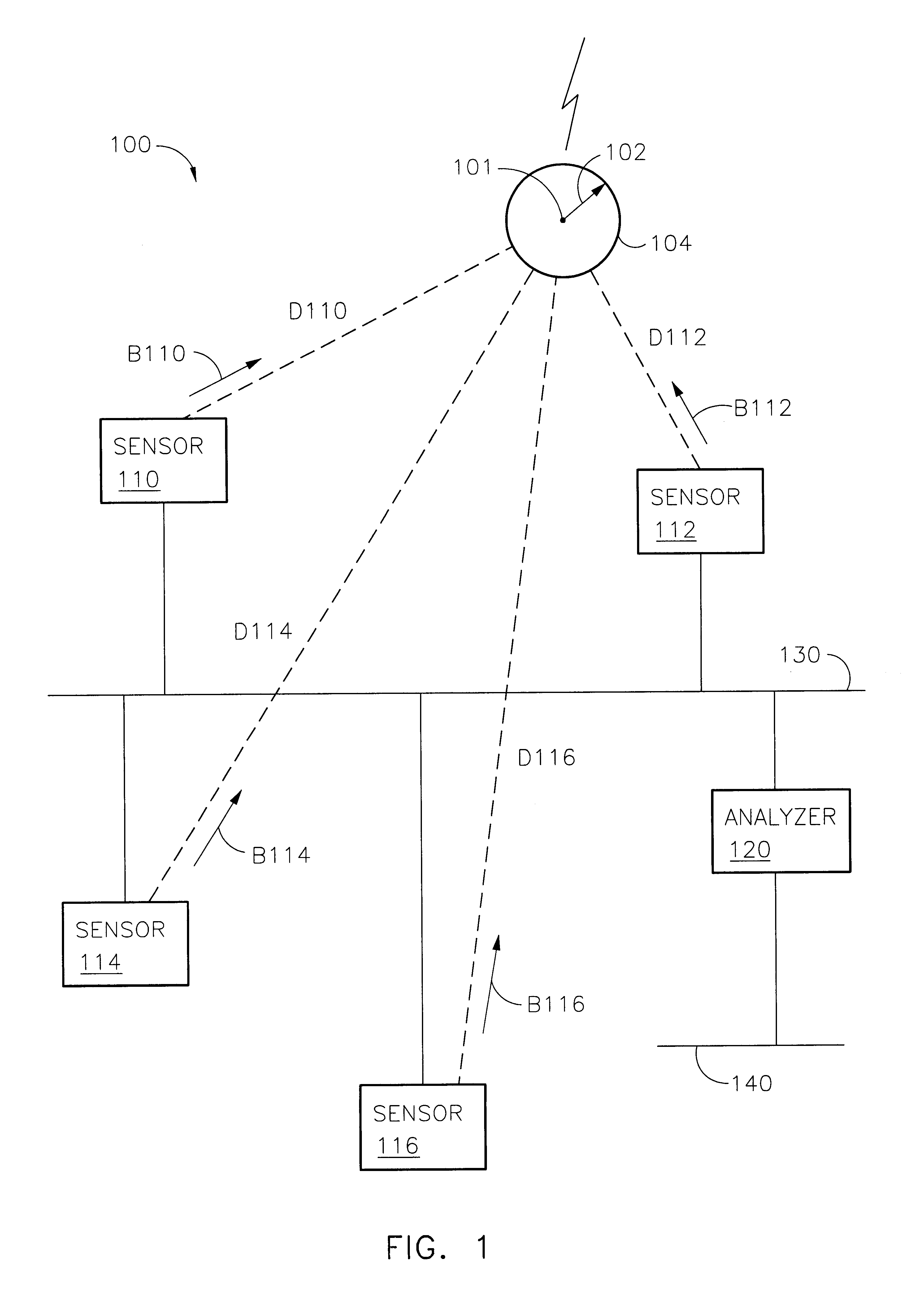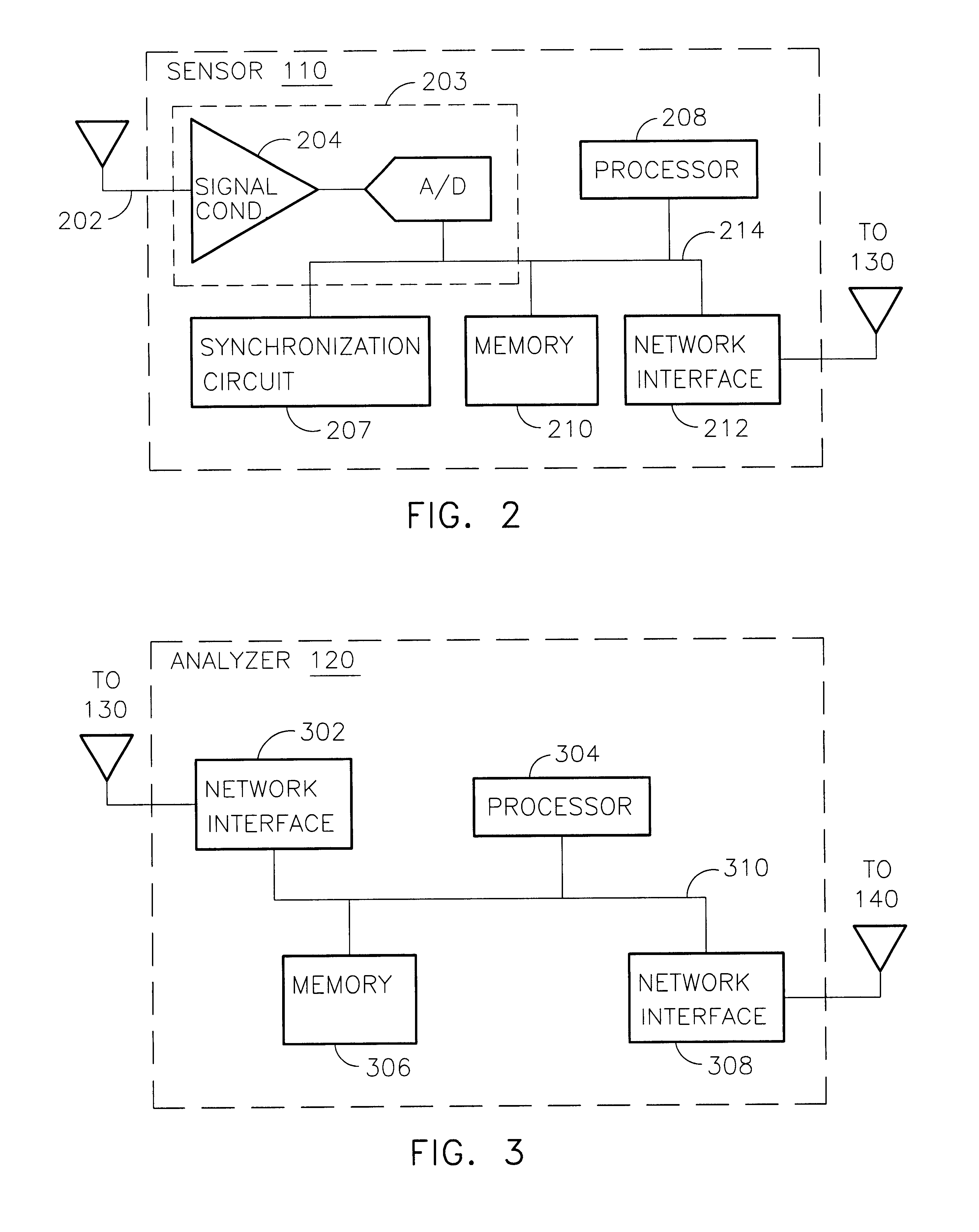Systems and methods for time corrected lightning detection
a technology of time-corrected lightning and detection methods, applied in special data processing applications, measurement devices, instruments, etc., can solve the problems of unsatisfactory adversely affecting the accuracy of return stroke estimated peak current estimates, and inability to accurately estimate the location of the return stroke and the estimated peak current of the stroke, etc., to achieve the effect of simplifying access to a suitable time correction and speeding up throughpu
- Summary
- Abstract
- Description
- Claims
- Application Information
AI Technical Summary
Benefits of technology
Problems solved by technology
Method used
Image
Examples
Embodiment Construction
A lightning detection system, according to various aspects of the present invention estimates the location where each cloud to ground return stroke occurred at the ground. In alternate embodiments, the current of each return stroke is also estimated. Estimates are efficiently computed based on data collected by sensors which report to an analyzer. The analyzer receives sensor reports, computes estimated locations and currents, and reports (e.g., continuously) the occurrences of return strokes with estimates of respective location and current that are more accurate than conventional systems. Improved accuracy is due in part to using time corrections and / or amplitude corrections to supplement data from sensor reports. Time corrections and amplitude corrections, according to various aspects of the present invention, account for terrain (e.g., path length over mountainous terrain and / or nonuniform conductivity of the earth due to variation in terrain).
When radio signals propagate across...
PUM
 Login to View More
Login to View More Abstract
Description
Claims
Application Information
 Login to View More
Login to View More - R&D
- Intellectual Property
- Life Sciences
- Materials
- Tech Scout
- Unparalleled Data Quality
- Higher Quality Content
- 60% Fewer Hallucinations
Browse by: Latest US Patents, China's latest patents, Technical Efficacy Thesaurus, Application Domain, Technology Topic, Popular Technical Reports.
© 2025 PatSnap. All rights reserved.Legal|Privacy policy|Modern Slavery Act Transparency Statement|Sitemap|About US| Contact US: help@patsnap.com



